Why you can trust Tom's Hardware
AMD's new tactic of repurposing APU silicon for the lowest-end budget chips increased the company's ability to ship low-priced silicon during the shortages. However, the Zen 2 architecture is showing its age, leaving Intel with a clear lead in the sub-$125 chip segment.
Below, we have the geometric mean of our gaming test suite at 1080p and 1440p and a cumulative measure of performance in single- and multi-threaded applications. We conducted our gaming tests with an RTX 3090, so performance deltas will shrink with lesser cards and higher resolution and fidelity settings.
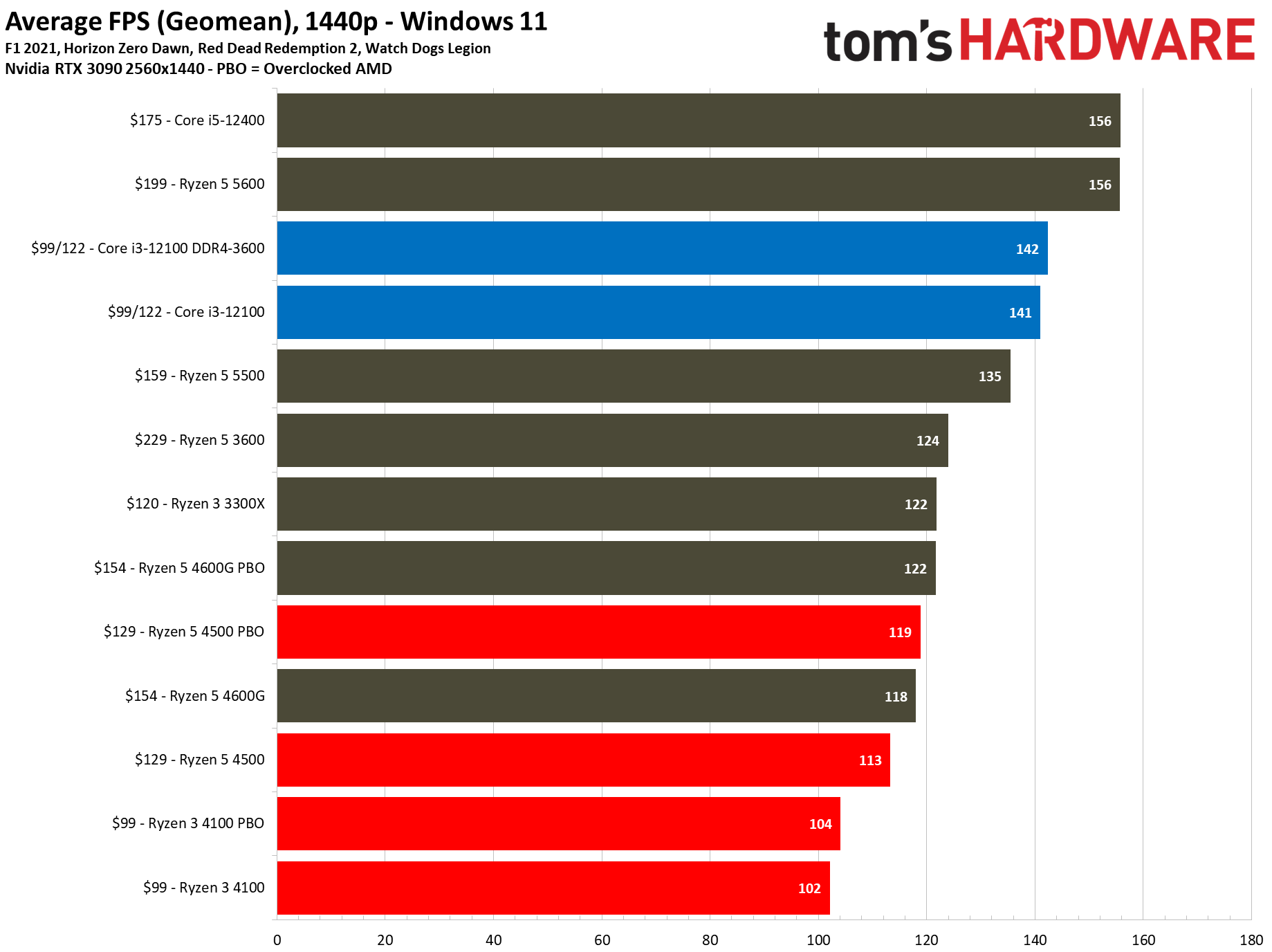

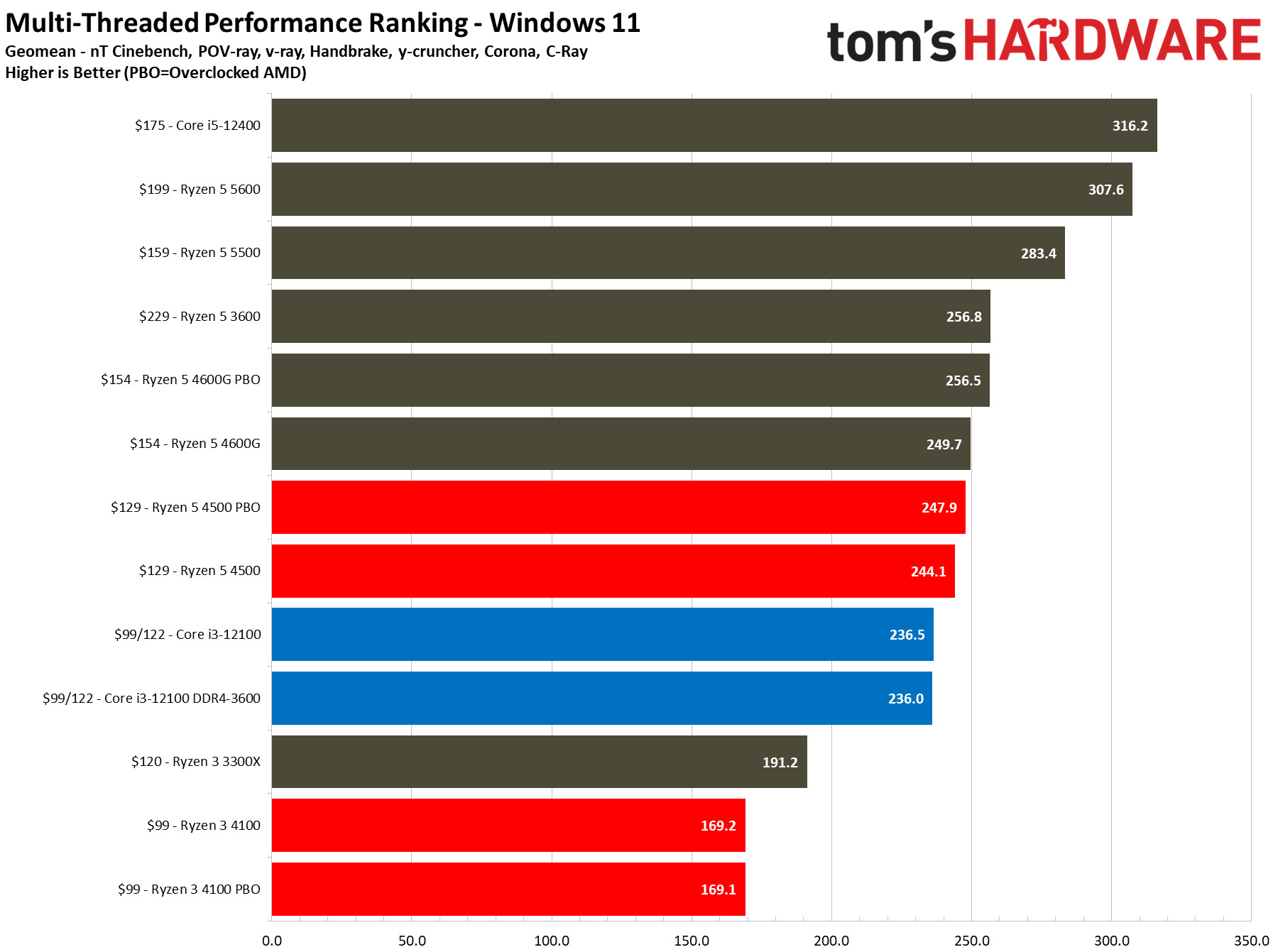
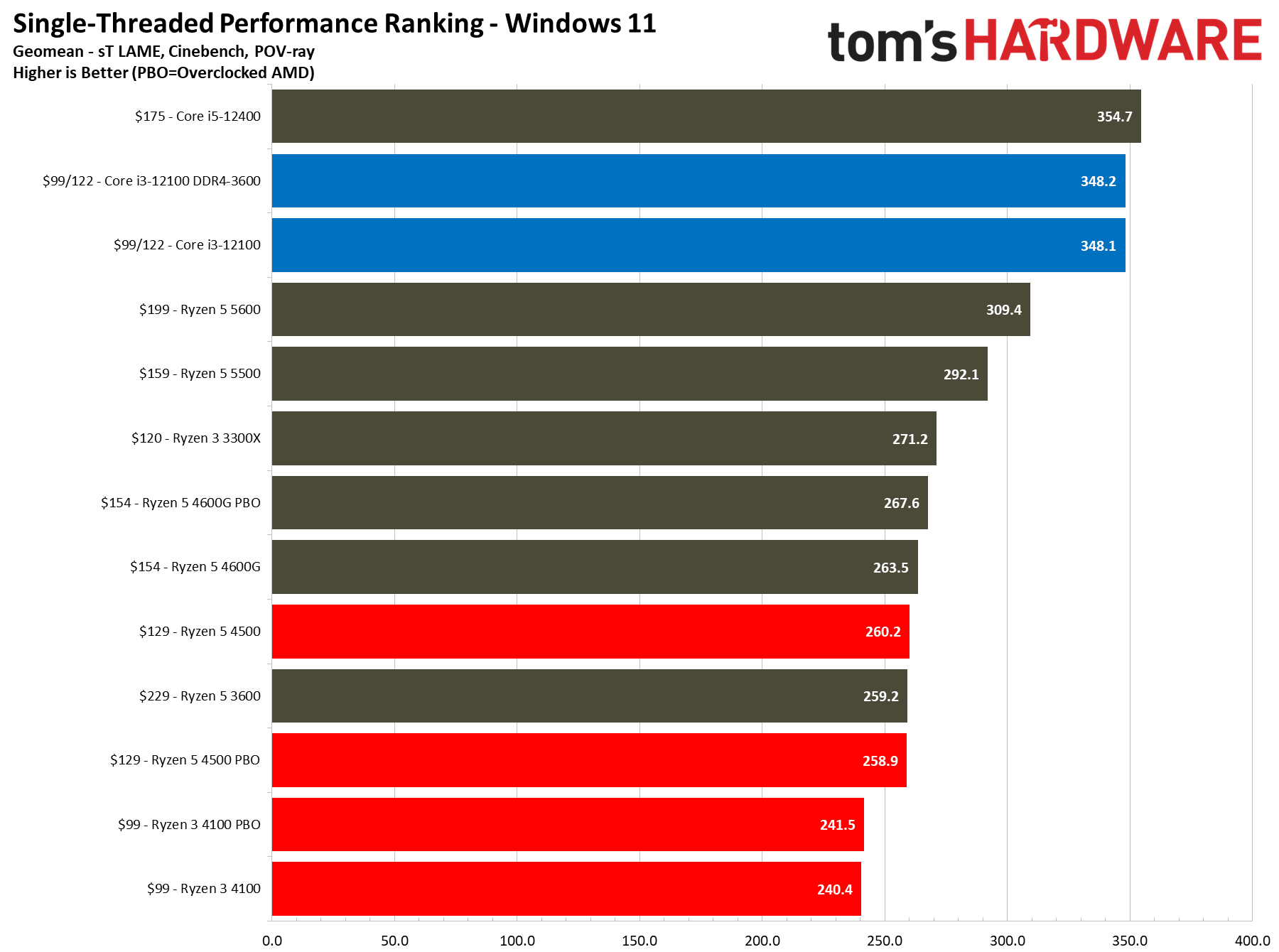
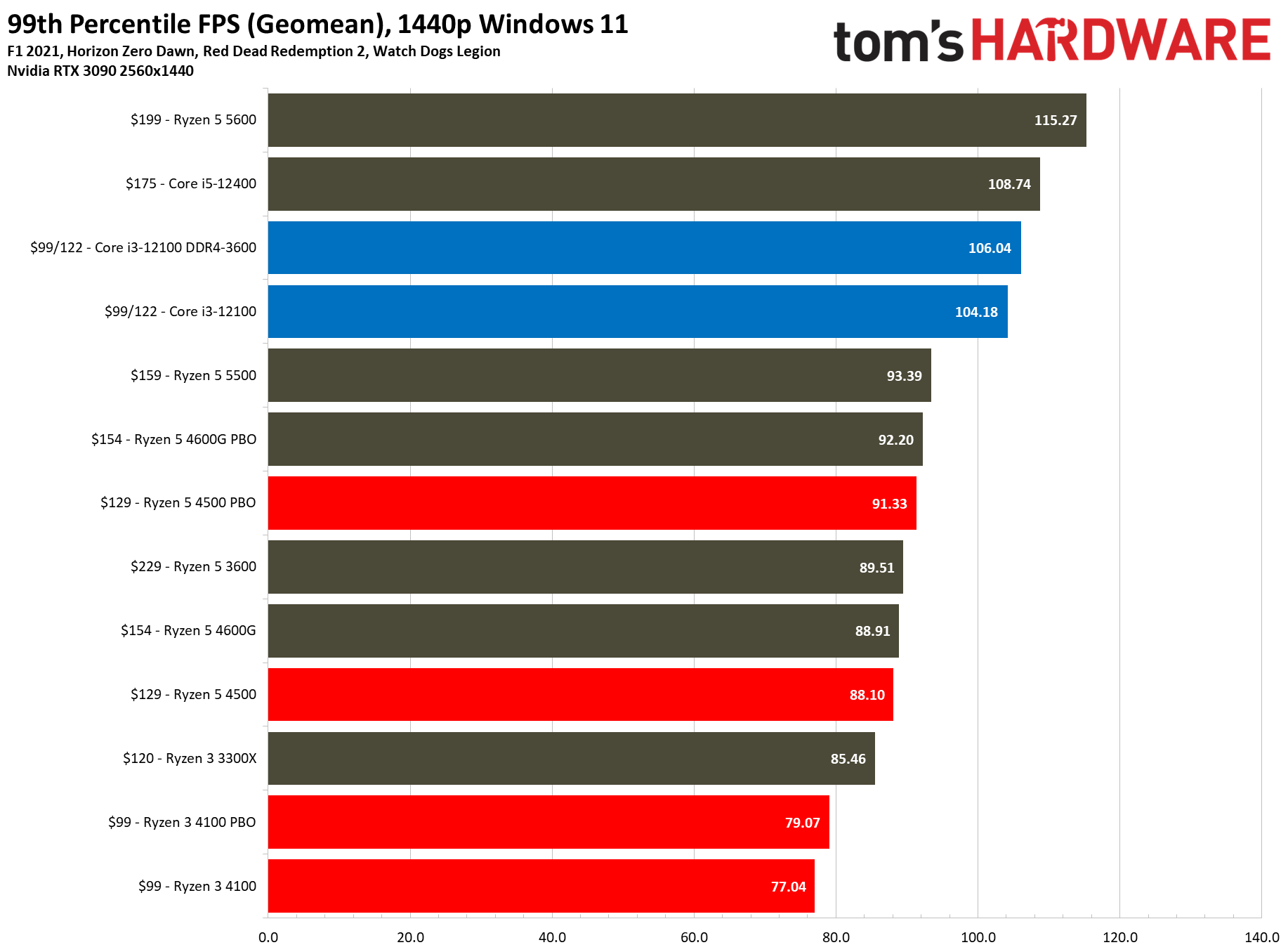
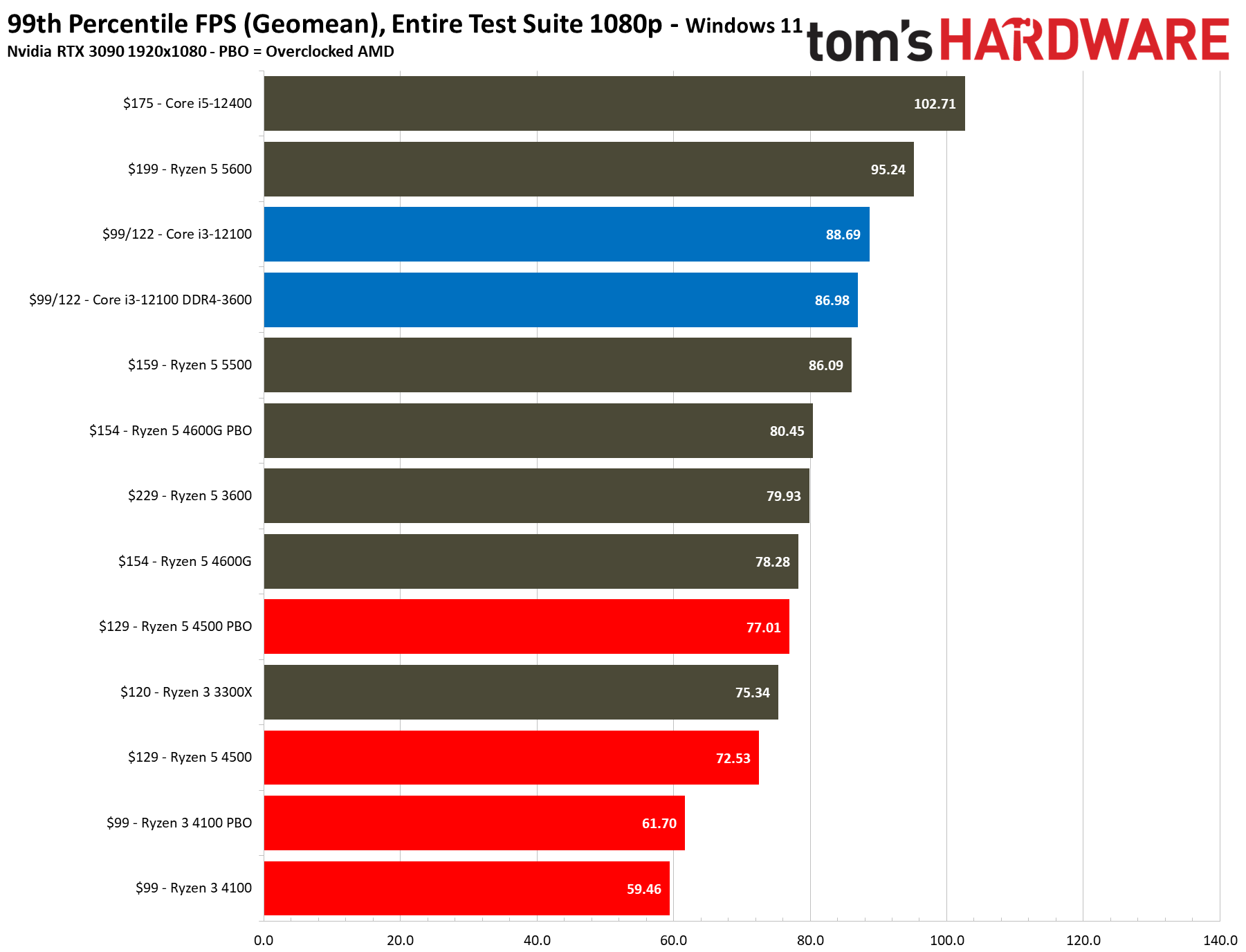
As a reminder, the $122 Intel Core i3-12100 and $99 12100F offer identical performance, but the latter comes with the iGPU disabled. The Core i3-12100 is an insurmountable 49% faster than the $99 Ryzen 3 4100 and 21.7% faster than the $129 Ryzen 5 4500 in 1080p gaming, making the Core i3 the clear choice for budget gamers.
The Core i3-12100 also dominates in single-threaded applications, being 44% faster than the Ryzen 3 4100 and 34% faster than the Ryzen 5 4500 in our overall measurement. In threaded work, the Core i3-12100 is 40% faster than the quad-core Ryzen 3 4100, leaving no justification for the 4100 for new builds.
The six-core Ryzen 5 4500 is 3% faster than the 12100 in our overall measurement of performance in threaded workloads, but be aware that we see somewhat larger advantages in the 4500's favor in some rendering workloads. That might make the 4500 attractive if you're interested solely in productivity work or looking for an upgrade for a Zen 1 system.
However, the Ryzen 5 4500's few advantages in threaded workloads come with severe tradeoffs in gaming and single-threaded applications. As we often see, mixed-use types of applications are common. Our Adobe tests are a good example — the 12100's superior mix of overwhelmingly faster single-threaded performance and more than sufficient threaded heft often takes the lead in those types of workloads.
The Ryzen 5 4500 is also limited to PCIe 3.0 connectivity, a disadvantage compared to Intel's support for PCIe 5.0 — particularly for the productivity-minded, who might appreciate the faster throughput of a PCIe 4.0 SSD. The Core i3-12100 also supports DDR4 or DDR5 memory, while the Ryzen 5 4500 is limited to DDR4. That doesn't factor in much because DDR5's premium pricing isn't a good fit for this class of chips.
Get Tom's Hardware's best news and in-depth reviews, straight to your inbox.
The Core i3-12100 and the Ryzen models come with bundled coolers, but AMD offers fully unrestrained overclocking, while Intel limits you to memory overclocking only. That isn't too much of a factor, either, as we saw limited gains with all of these budget chips.
The Core i3-12100 and 12100F remain the hands-down winners for budget gaming builds. Most budget builders are looking for the best all-rounder chip they can buy, and here the Core i3-12100 and 12100F unquestionably offer the best blend of performance in gaming, single- and multi-threaded work, along with more modern connectivity options.
The Ryzen 3 4100 doesn't make much sense at its $99 price point, even for upgrades. The Ryzen 5 4500 would make a decent upgrade for an existing budget AM4 build if you can find it at below MSRP, but be aware that the Zen 3-powered Ryzen 5 5500 is a better upgrade, and you can often find it on sale for only ~$15 more than the 4500. For new builds, the Intel Core i3-12100 remains the champion of the budget arena.
- MORE: Best CPUs for Gaming
- MORE: CPU Benchmark Hierarchy
- MORE: AMD vs Intel
- MORE: Zen 4 Ryzen 7000 All We Know
- MORE: Raptor Lake All We Know
Current page: Core i3 Remains Unbeaten
Prev Page Application Benchmarks AMD Ryzen 3 4100 and Ryzen 5 4500
Paul Alcorn is the Editor-in-Chief for Tom's Hardware US. He also writes news and reviews on CPUs, storage, and enterprise hardware.
